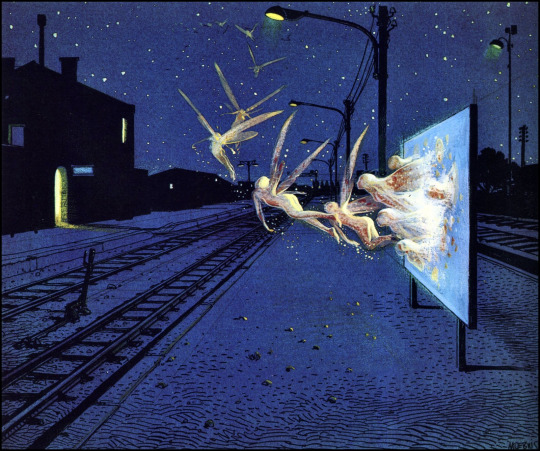#fées
Text
I was thinking about the difference between the British "fairy" and the French "fée", and suddenly the perfect comparison struck me.
The "fairy" from British folklore is basically Guillermo del Toro's take on the fair folk, trolls, goblins and other fairies in his movies, from "Pan's Labyrinth" to "Hellboy II". You know, all those weird monsters and bizarre critters with strange laws and customs, living half-hidden from humans, and coming in all sorts of shapes and sizes and sub-species and whatnot. Almost European yokai.
But the "fée" of French legend and literature? The fées are basically Tolkien's Elves. Except they are all female (or mostly female).
Because what is a "fée"? A fée is a woman taller and more beautiful than regular human beings. She is a woman who knows very advanced crafts and sciences, and wields mysterious unexplained powers. She is a woman who lives in fabulous, strange and magical places. She is a woman with a natural knowledge or foresight of the past and the future, and who can appear and disappear without being seen. Galadriel as she appears in The Lord of the Rings is basically the best example I can use when trying to explain to someone what a "fée" in French folklore and culture actually is.
(As a reminder: the fées of France are mostly represented by the Otherwordly Ladies of the Arthurian literature - Morgane, Viviane, bunch of unnamed ladies - or by the fairy godmothers of Perrault or d'Aulnoy's fairytales, to give you an idea of how they differ from the traditional "fae" or "fair folk". All female, and more unified, and so human-like they can pass of or be taken for humans. The "fées" are cultural descendants of the nymphs and goddesses and oracles/priestesses of Greco-Roman-Germanic-Gallic mythologies. That's why they are so easily confused with witches when they turn evil, and when Christianity arose most fées were replaced by the figure of the Virgin Mary, the most famous "magical beautiful otherwordly woman" of the religion)
#fairies#fée#french folklore#french legends#european folklore#fairy#fair folk#tolkien's elves#elves#fées
120 notes
·
View notes
Text

The Fairies
c. 1900
Postcard
#fairies#fairy#little fairies#little folk#fées#boy#boat#vintage illustration#post card#postcard#vintage postcard#1900s#fairy illustration#dream
121 notes
·
View notes
Photo

Le Fées, 19th century, Gustave Doré (1832-1883)
136 notes
·
View notes
Text
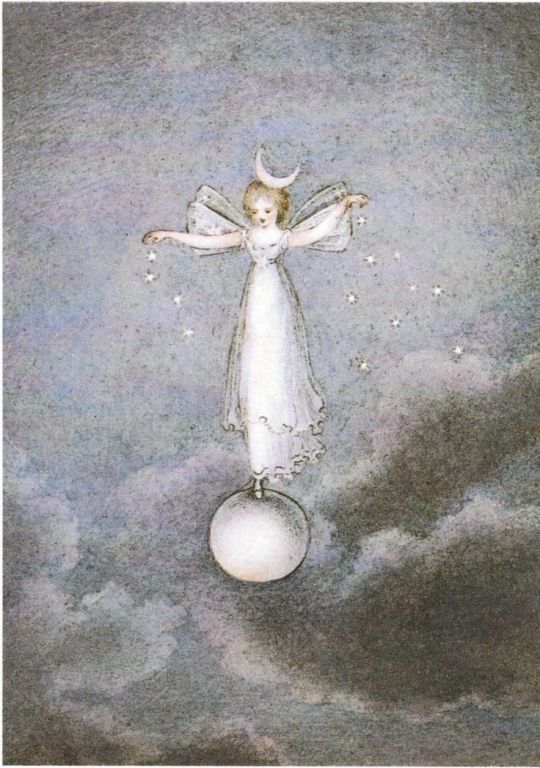
𝓛𝓾𝓷𝓮
7 notes
·
View notes
Text
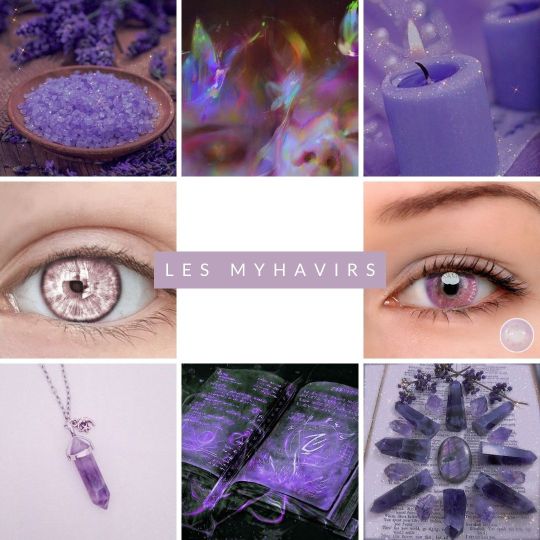
☾ Origine ☽
Outre les fées et les spécialistes, il existe aussi ce que l'on nomme les Myhavir. Ce sont des enfants conçus par la magie des fées lors d'un rituel où se réunissent une fée du feu, une fée de l'air, une fée de la terre, une fée de l'eau, une fée de l'esprit et pour finir une fée des astres. Cet évènement était effectué pour pallier la stérilité de certains couples. Ainsi, les futurs parents se voyaient octroyer un enfant aux flux magiques supérieurs à la normale. Leur corps est entièrement composé de particules magiques. Par conséquent, ils sont plus puissants, plus forts physiquement et plus charismatiques... Cependant, ces caractéristiques positives sont mises à mal par une instabilité dangereuse. Considérés comme des menaces, la naissance des myhavirs est proscrite par l’ensemble des royaumes de la Dimension Magique depuis plus de 200 ans déjà.
☾ Physique & caractère ☽
Un myhavir est semblable en tout point à n'importe quelle fée (transformations comprises), du moins si l'on exclut ses iris aux nuances rosées et la couleur violacée de son sang. Etant un être constitué dans sa totalité de magie les myhavir possèdent un physique très avantageux qui a d'ailleurs tendance à les desservir, et surtout à attirer la jalousie des fées qui voit en ces "êtres" des imposteurs et des ennemis. De plus, il faut savoir que la naissance d’un Myhavir implique de lourds sacrifices, sacrifices qui auront bien évidemment des impacts très négatifs sur le développement d'un enfant myhavir. Au-delà de la création d’un être surpuissant et instable, la grossesse de cet enfant entraîne dans la grande majorité des cas la mort de la mère. C'est d'ailleurs pour ça que de nombreux couples passent par une mère porteuse à laquelle ils promettent monts et merveilles, ainsi que la garantie de mettre sa famille à l'abri de tout.
La dose colossale de magie circulant dans les vaisseaux sanguins de l’enfant réduit donc sa durée de vieet rares sont les enfants qui atteignent l’âge de 10 ans. Les rares Myhavirs qui dépassent cet âge sont assujettis à des souffrances secondaires et non négligeables. Parmi ces effets secondaires nous retrouvons les maux de tête, mais aussi les nausées, les vertiges, les troubles psychologiques divers et variés ou encore un système immunitaire plus faible que la normale. Toutes ces souffrances combinées ont tendance à accélérer la mort du Myhavir, et les rares survivants sont considérés comme des miraculés.
☾ La magie des Myhavir ☽
La magie des myhavirs se distingue non seulement par une instabilité puissante et imprévisible mais surtout par cette capacité à maîtriser différents types de sources magiques. Aujourd’hui, trois types de myhavirs ont été isolés :
magie complémentaire : le myhavir maîtrise deux magies issues d’une même source, l’eau et le givre (magie de l’Eau), le sable et la flamme du dragon (magie du Feu), l’endormissement et l'envoûtement (magie de la Lune);…
magie dissociée : le myhavir maîtrise deux magies issues de sources différentes, la foudre et la roche (magie de l’Air et magie de la Terre), la télépathie et le milieu spatial (magie de l’Esprit et magie Astral),…
magie triadique : le myhavir maîtrise trois magies, souvent de manière déséquilibrée (ou du moins, pas à son maximum).
#projet forum rpg#forum rpg#rpg#projet rpg#winx fate#rpg français#fées#forum fantastique#fantastique#féerique
5 notes
·
View notes
Photo
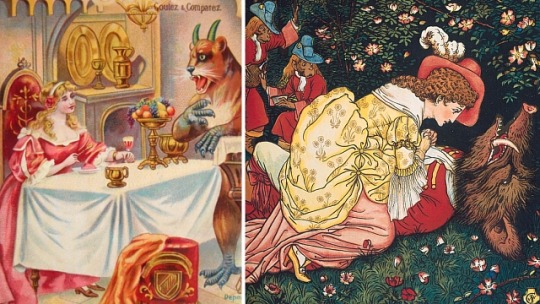
LÉGENDE | La Belle et la Bête : conte abordant à l'origine la condition de la femme âgée dans la société ➽ http://bit.ly/Belle-Bete Parfois attribué à tort à Perrault, le conte « La Belle et la Bête » est popularisé en 1757 par l’auteur s’adressant aux jeunes filles Madame Leprince de Beaumont, proposant alors une version édulcorée du récit original de 1740 moqueur, railleur, critique et réprobateur composé par Gabrielle-Suzanne de Villeneuve qui avait puisé dans son propre vécu et mettait en scène une Bête plus animale et une Belle moins innocente
#origine#conte#légende#Belle#Bête#Perrault#Leprince#Beaumont#Villeneuve#version#récit#sexualité#fées#vieilles#femmes#âgées#vieillesse#féminine#société
8 notes
·
View notes
Text

Bʀɪᴀɴ Fʀᴏᴜᴅ
#faeries#fées#faery world#forest#fantasy art#brian froud#dark blue#blue#color blue#winged fairy#spirits
2 notes
·
View notes
Text
Speaking of the Lilac Fairy, it is quite interesting to see that the fairy godmother of Donkey Skin only receives a name in the prose version of “Donkey Skin”, whose author is actually unknown - in all of Perrault’s tale (that we can truly attribute to him), the fairy godmothers (and the fairies in general are unnamed).
The very opposite of madame d’Aulnoy, who had the habit of naming most of her fairies, good or bad.
In fact, if you a want a complete list of the names of her fairies here you go:
# La fée Amazone (The fairy Amazon, good fairy)
# La fée Bénigne (The fairy Benign, good fairy)
# La Reine des Bois (The Queen of the Woods, good fairy)
# La fée Cancaline (wicked fairy)
# La fée Carabosse (wicked fairy)
# La fée du Désert (The Fairy of the Desert, wicked fairy)
# La fée Ecrevisse (The Crayfish Fairy, good then bad fairy)
# La fée Fanfreluche (The fairy Trinket, wicked fairy)
# La fée Gentille (The fairy Kind, good fairy)
# La fée Grenouille (The Frog fairy, good fairy - well, in truth she is just half-fairy, but still works)
# La fée Grognette (The fairy Grumbling, wicked fairy)
# La fée Lionne (The fairy Lioness, wicked fairy)
# La fée Magotine (wicked fairy)
# La fée Merluche (The fairy Hake, good fairy)
# La Reine des Météores (The Queen of Meteors, wicked fairy)
# La fée Protectrice (The fairy Protectress, good fairy)
# La fée Ragotte (wicked fairy)
# La fée Souris (The fairy Mouse, good fairy)
# La fée Soussio (wicked fairy)
# La fée Souveraine (The fairy Sovereign, good fairy)
# La fée Tourterelle (The fairy Turtledove, good fairy)
# La fée Trufio (good fairy)
# La fée Tulipe (the fairy Tulip, good fairy)
# La fée Violente (The fairy Violent, wicked fairy)
And that’s not counting six more nameless fairies that appear throughout the fairytales.
So a total of... 24+6= 30 fairies in total for Madame d’Aulnoy.
Against... Twelve unnamed fairies for Perrault.
#french fairytales#fées#fairies#fairy godmothers#madame d'aulnoy#charles perrault#perrault fairytales#d'aulnoy fairytales#wicked fairies
19 notes
·
View notes
Text
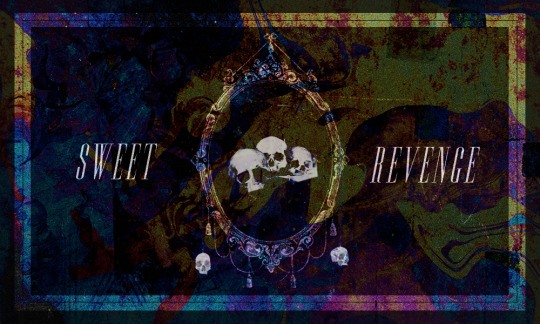
SWEET REVENGE, forum rpg dans l'univers du WINX CLUB, ouvert depuis plus de 2 ans maintenant.
Intrigue sombre, grandes possibilités de personnages, familles royales... Qui que vous soyez, devenez vous aussi fée, sorcier·ère ou spécialiste ! (tous les genre ont leur place dans les différents groupes)
MàJ à venir prochainement !
#rpg#forum rpg#winx club#forum fantastique#forumactif#forum winx club#forum winx#forum fées#fées#french rpg#pub forum rpg
2 notes
·
View notes
Text

MY BELTANE ALTAR ^^

WITH A PEACE SIGN. ;-)
#happy beltane#beltane#premier mai#wicca#paganisme#pagan#altar#autel#païen#bonjour le printemps#fées#fleurs#fairies#flowers#paper pictures#beltane2023
2 notes
·
View notes
Text
The folklore of Normandy: Fairies
Loosely translated from Amélie Bosquet’s “La Normandie romanesque et merveilleuse ; traditions, légendes et superstitions populaires de cette province” - “Romantic and marvelous Normandy ; traditions, legends and superstitions of this province”, 1845-54
Article: Les fées (fairies)
Dancing is the fairies’ favorite pleasure. At night, when the moon shines bright, they gather to dance in a circle - and they dance without crushing any grass, without even touching the ground, they dance - or rather they slide - to the sound of melodious instruments. But anyone who dares approach such a celebration will be taken by a strong vertigo - a vertigo which will compel them to take part of the dance. At first welcome with good will, encouraged and flattered by the fairies, the newcomer might be pleased with their decision... But soon the magical circle goes faster and faster, turning without ever stopping, and when it finally stops the poor human falls on the ground, exhausted. Sometimes, as a last cruelty, these malicious fairies like to make their human partner jump at an incredible height - and if they do not die by landing back onto the earth, they will certainly find themselves in the morning with a lot of broken bones and damaged muscles. The area where fairies dance are easily recognizable: it is always a circular area, where the grass looks like it was burned - they are called “cercle des fées”, “circle of fairies”. There are two types of circle of fairies: one has green grass in the center, surrounded by a dry circle ; the other is barren in the center, with around a circle of grass thicker and fresher than the rest of the meadow.
While the fairies of Normandy greatly enjoy dancing, they have other hobbies. In some regions, they are depicted as very clean and industruous folks (which separates them from the elfes - elves). The fairies often go to lonely fountains, where they wash their laundry before having it dry on druidic stones. Once the laundry is dry, they store it in little caverns either inside of rocks or under mounds and tumulus - places called “Chambres des fées” (Fairy rooms) or “Grottes des fées” (Fairy grottos). These true housewives do even more: like the lutins, they are very proficient in rural work. They usually choose a given farm, and borrow there horses, harnesses and tools - because in the night, they will use them for mysterious works that seemingly do not give any visible results in the morning, but must have some hidden utility. Proud and mischievious, the Normandy fairies like to ride on horses in an unusual fashion: they sit on the neck of the animal, and make yokes out of the mane of the beast.
Fairies are said to be very talented, good and knowledgeable in everything they do, so much that they bring happiness and bless everything they touch. When they use drudge-animals, they will grow fat, the tools they touched are repaired (if they were broken) or become as if they were new (if they were worn-out). Fnally, they are gracious, kind, easily attach themselves to people, and like to give little services to others - they are even known to gift cakes to those that please them (or those that have the good idea to not disturb them).
Article: Le rendez-vous des fées (The meeting of the fairies)
At a certain crossroad of Normandy, it was believed that every night, the great council of the fairies gathered to make a surveillance work over the land. Each fairy had a given area to watch over, and they had to make a full report on everything that happened in their area. The president of the assembly held between her hands a “book of life”, which contained the name of every inhabitant of Normandy. As the president heard the other fairies’ report, she placed either a white dot or a black dot next to each name - a white dot if they were favorable to the person’s actions and deeds, a black dot if the person’s actions displeased them. Then, a judgement was pronounced over the crime of the black-doted individuals. Each nocturnal gathering ended up in a wild and acrobatic dance.
The results of the judgements happened quite fast afterward. You see, this crossroad was a needed step on the way towards the market of Gisors - so all those that either had to sell their products or go buy their groceries had to go through the crossroad. Each and every person arriving by the crossroad felt a sudden tiredness, that forced them to stop or sit down - no matter how much they wanted to go forward. But this was an artificial fatigue, that only stopped for a moment. The good people, those that had a white dot in the fairies’ book, promplty got up back again, feeling all fresh and full of energy - they advanced quickly on the road, with their head high and their heart happy. At the market of Gisors, they were acclaimed with “Here are the good people!”, recognized by ther brave walk and their bubbling behavior. However, bad people, those with the black dot, felt ashamed and scared at the crossroad, and their bodies was suddenly covered in a certain type of nsects... When the market of Gisors saw them arrive, dragging their feet, scratching themselves all over, they were welcomed with the screams “Here are the bad people! They have lice!”.
14 notes
·
View notes
Photo

Je serai à #Paris dès la semaine prochaine ! N’hésitez pas à me contacter ou à me relancer ✨ #Publication @voguemagazine #photography & #model : @natalia_kovachevski Le #lac dès #fées du #ValSansRetour ✨#ForetdeBroceliande #autoportraitphotography #nataliakovachevski #selfportraiture #broceliandeforest #reflection https://www.instagram.com/p/CjCiEHcDMBy/?igshid=NGJjMDIxMWI=
#paris#publication#photography#model#lac#fées#valsansretour#foretdebroceliande#autoportraitphotography#nataliakovachevski#selfportraiture#broceliandeforest#reflection
4 notes
·
View notes
Photo

Fées Danse (The Fairies Dance), Georges Picard (1857-1946)
#french artist#fairies#fae#Fées#fairies dance#fées danse#mythological painting#fantasy#georges picard
65 notes
·
View notes
Photo
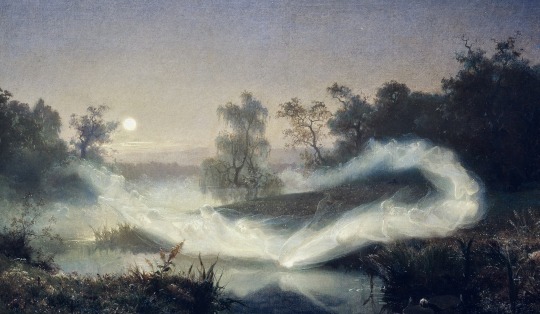
August Malmström - Dancing fairies
18 notes
·
View notes
Photo
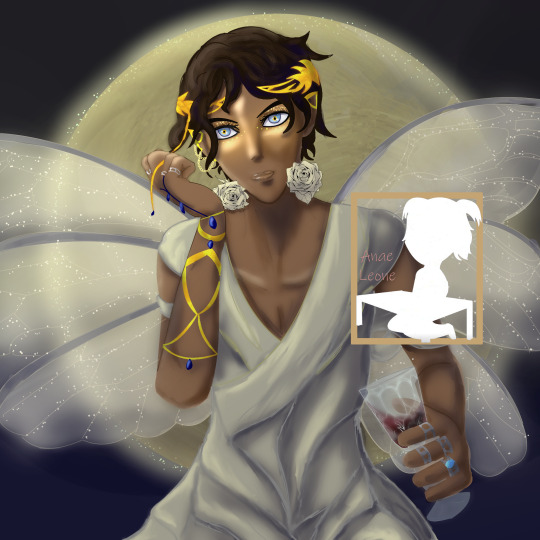

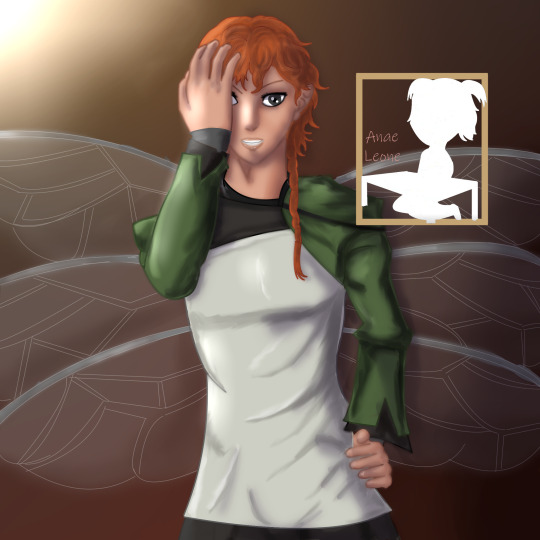

J’avais envie de faire des fées ce mois-ci, voilà le résultat ! Je réessaye un style que je maîtrise moyen niveau ce qui fait que je retrouve régulièrement des bêtises que j’avais pas vues plus tôt. Woops.
En tout cas voilà quatre personnages originaux pour un projet que je ne suis même pas sûre d’écrire un jour.
3 notes
·
View notes
